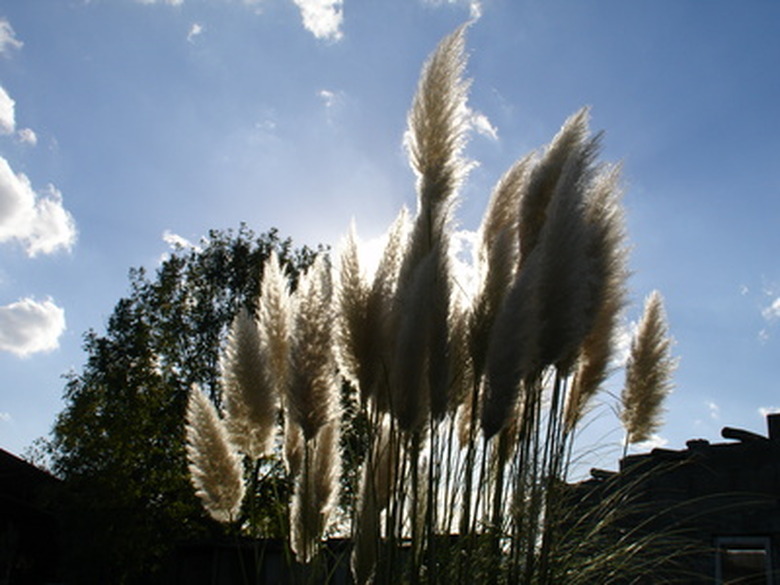How To Propagate Pampas Grass
When a pampas grass plant is 4 to 6 years old, the center of the clump begins dying. This is signaled by new growth appearing only around the younger, healthier perimeter of the plant. Cortaderia selloana can be propagated in August or September, but the best time is in the spring after the last predicted frost but before the appearance of new growth. This will give the plant an entire growing season to recover from the process and establish its root system well before winter dormancy. Wear heavy gloves and a long-sleeved shirt when working in such close proximity to pampas grass. The stiff leaves have spiked edges that can inflict nasty cuts.
Step 1
Cut the pampas plant back to 1 to 2 feet tall so that you can clearly see its base.
- When a pampas grass plant is 4 to 6 years old, the center of the clump begins dying.
- Cut the pampas plant back to 1 to 2 feet tall so that you can clearly see its base.
Step 2
Examine the stems at soil level. The inner section of the clump will be dead or dying and will be surrounded by healthy younger shoots.
Step 3
Cut into the clump vertically with a sharp spade, separating a healthy chunk of younger growth from the center of the plant. Dig the division out of the ground.
Step 4
Plant divisions at exactly the same depth that they occupied while growing from the mother plant. Water thoroughly and keep the soil evenly moist throughout the growing season.
Plant Pampas Grass
Pampas Grass (Cortaderia selloana) creates a tall, flowing feature in your garden when in full bloom. The grass thrives in warm temperatures and is a perennial in U.S. Department of Agriculture plant hardiness zones 8 through 10. Clear the area and work the soil to a minimum depth of 12 inches about one month before the desired planting date to give the soil time to settle. Plant the pampas grass transplants in a new location immediately and at the same depth they were previously growing. Planting pampas grass from seeds can begin during the late winter months. USDA zones warmer than zone 7 rarely get freezing temperatures in the spring that will damage the plants. Use large pots with good drainage holes to grow pampas grass if you are concerned about the plant spreading or becoming too aggressive in your garden.
- Examine the stems at soil level.
- Use large pots with good drainage holes to grow pampas grass if you are concerned about the plant spreading or becoming too aggressive in your garden.
Things Needed
- Heavy gloves
- Long-sleeved shirt
- Spade
References
- Plants for a Future: Cortaderia selloana
- Brian's Garden: Pampas Grass
- Floridata: Cortaderia Selloana
- North Carolina State University: Ornamental Grasses for North Carolina
- University of Wisconsin Extension; Master Gardener Handbook for Wisconsin Gardeners
